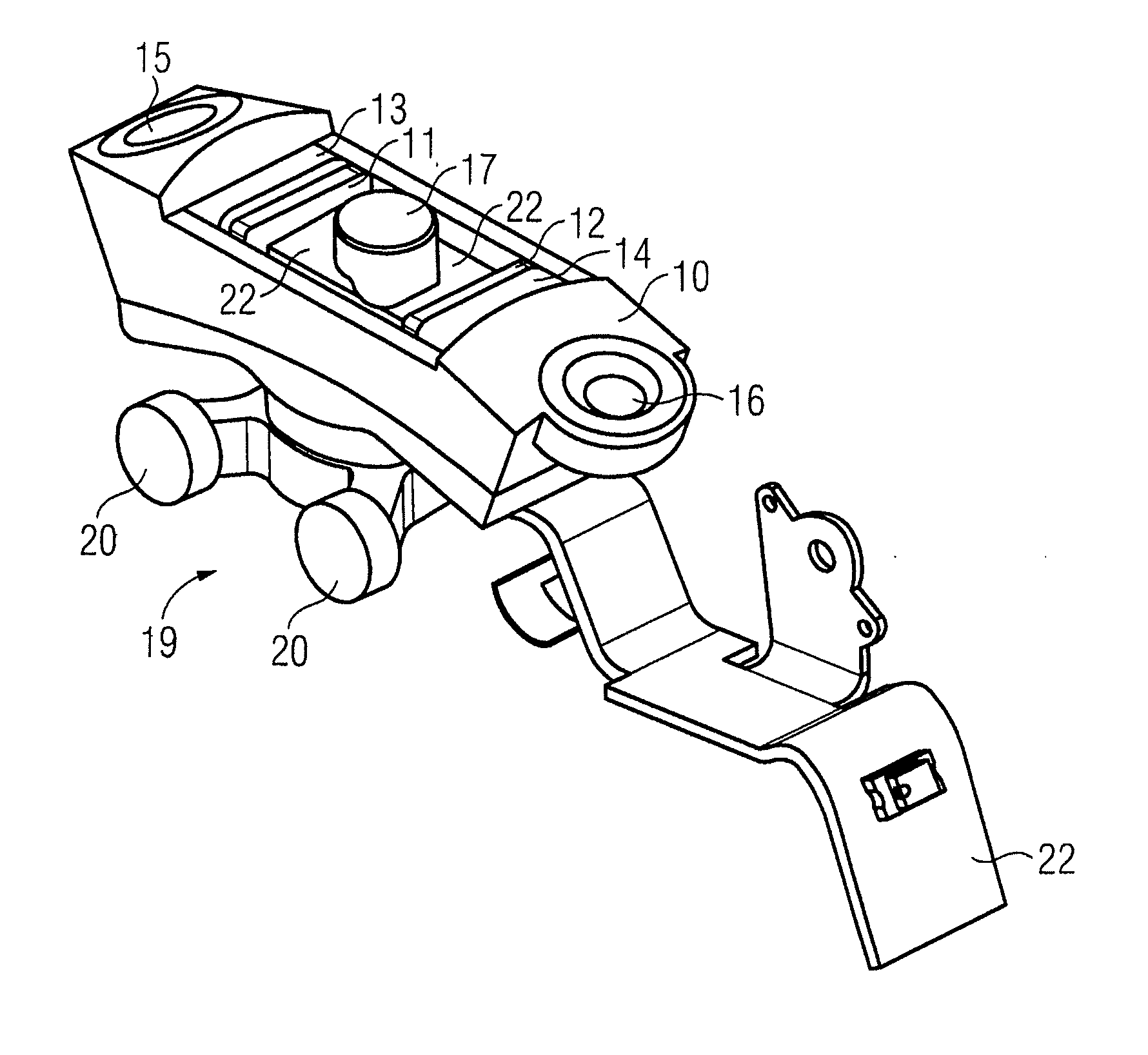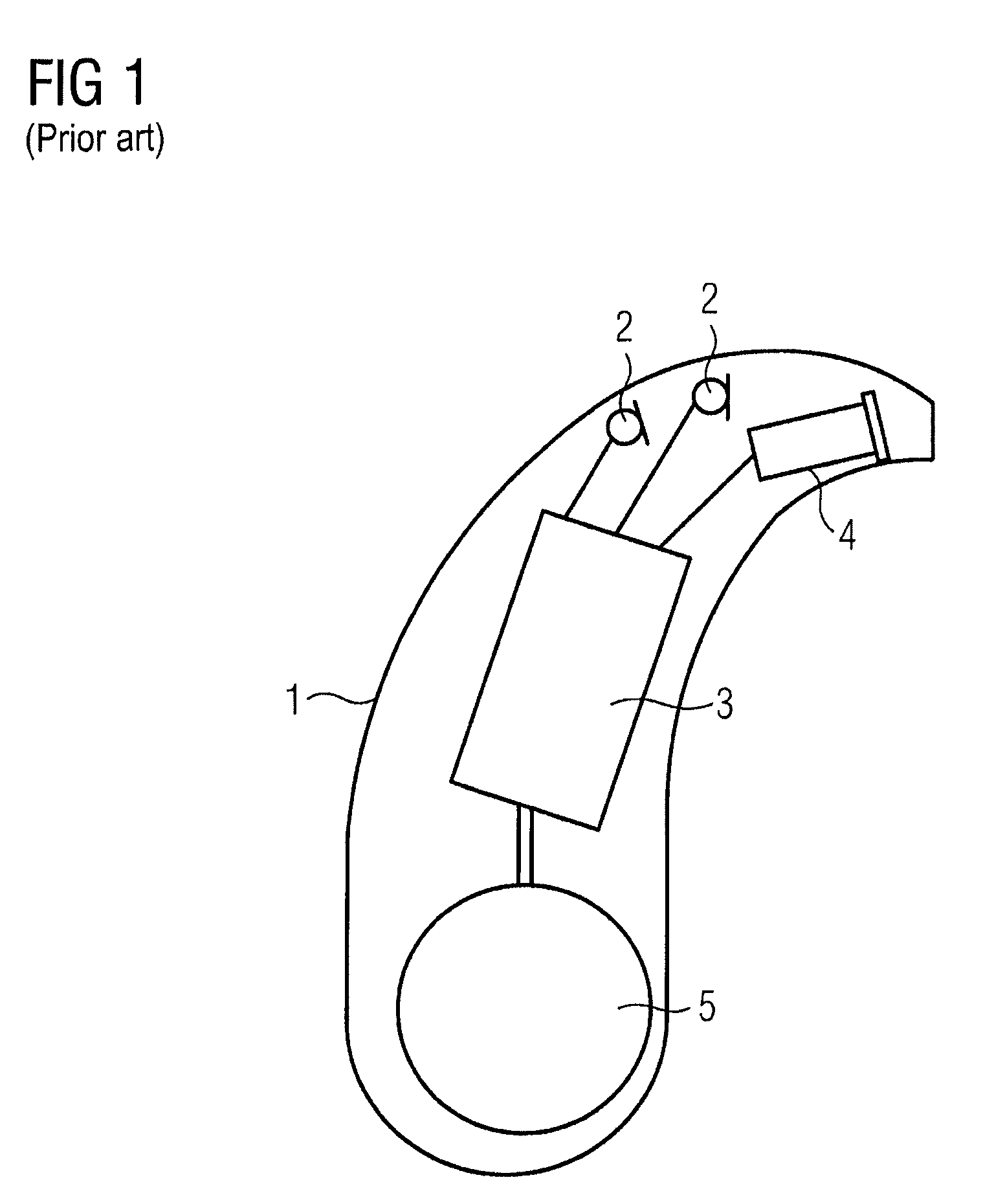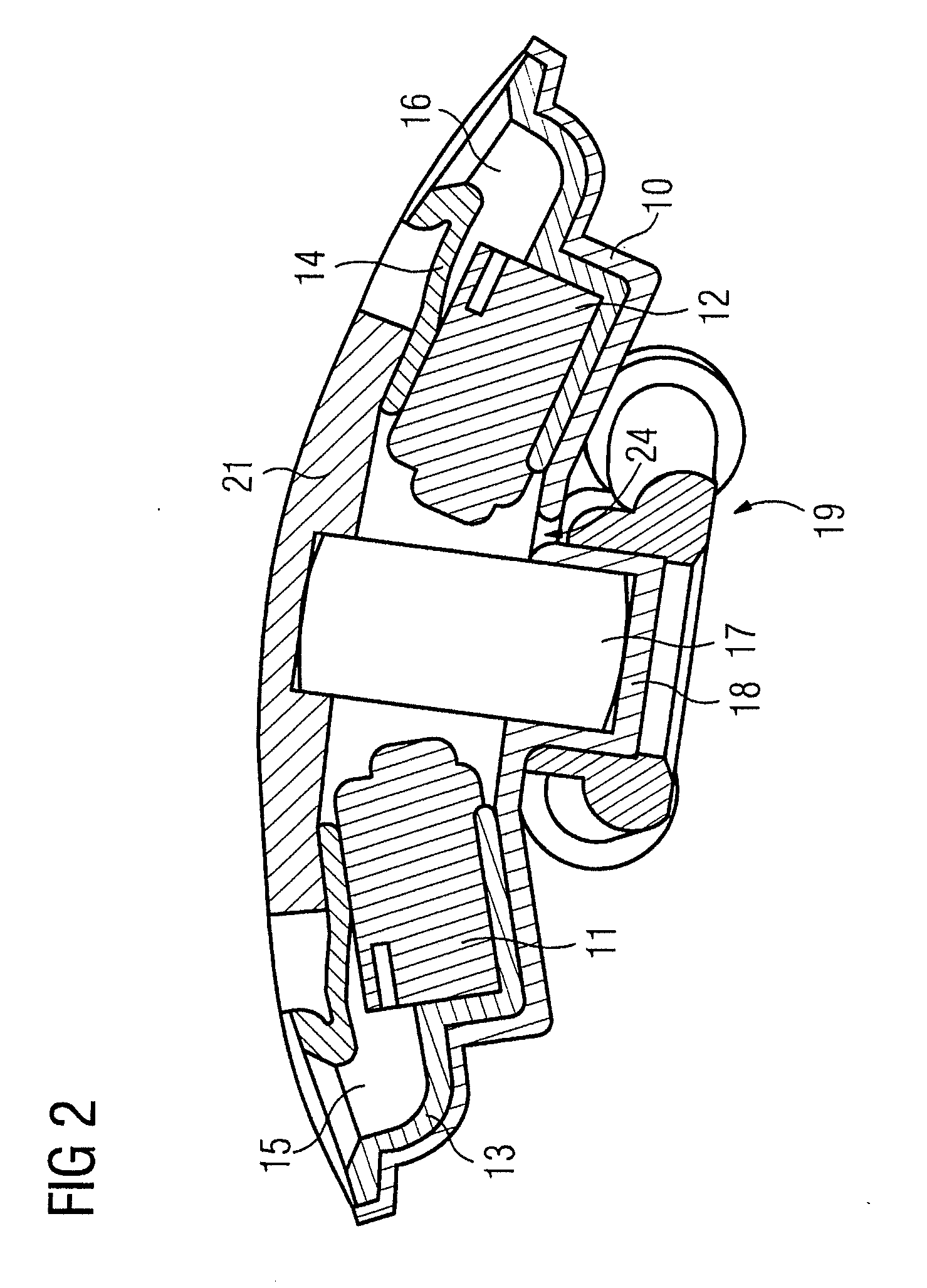Microphone module for a hearing device
a technology for hearing devices and microphones, applied in the direction of deaf-aid sets, electric devices, etc., can solve the problems of structure-borne sound and feedback suppression at the microphones, and achieve the effect of avoiding feedback and being advantageously used
- Summary
- Abstract
- Description
- Claims
- Application Information
AI Technical Summary
Benefits of technology
Problems solved by technology
Method used
Image
Examples
Embodiment Construction
[0023]The microphone module shown in FIG. 2 represents a separate (stand-alone) unit that can be easily installed in a hearing device housing or can be easily removed from the hearing device housing. It has a stand-alone module housing 10 in which here are accommodated two microphones 11, 12. The microphones 11, 12 are mounted (carried) in the module housing 10 by microphone pouches 13, 14. The module pouches 13, 14 respectively have a sound conduction nozzles 15, 16. The sound to be received penetrates from the outside to the microphones 11, 12 via these sound conduction nozzles 15, 16. To damp structure-borne sound, the microphone pouches 13, 14 are produced from a soft material, for example rubber or foamed rubber. The housing of the microphones 11, 12 does not directly contact the module housing 10. Structure-borne thus sound can only arrive from the module housing 10 to the microphone housings or the microphones 11, 12 via the microphone pouches 13, 14.
[0024]Furthermore, an ind...
PUM
 Login to View More
Login to View More Abstract
Description
Claims
Application Information
 Login to View More
Login to View More - R&D
- Intellectual Property
- Life Sciences
- Materials
- Tech Scout
- Unparalleled Data Quality
- Higher Quality Content
- 60% Fewer Hallucinations
Browse by: Latest US Patents, China's latest patents, Technical Efficacy Thesaurus, Application Domain, Technology Topic, Popular Technical Reports.
© 2025 PatSnap. All rights reserved.Legal|Privacy policy|Modern Slavery Act Transparency Statement|Sitemap|About US| Contact US: help@patsnap.com



